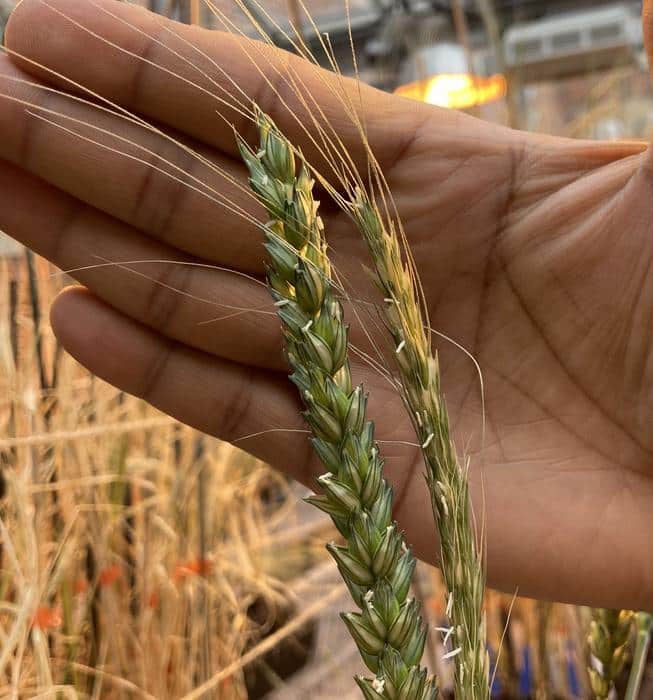An international team of researchers led by UMD scientists have sequenced the complete genome for einkorn wheat, the world’s first domesticated crop and traced its evolutionary history. The information will help researchers identify genetic traits like tolerance to diseases, drought and heat, and re-introduce those traits to modern bread wheat. It is a major step forward in the race to protect the world’s food supply from climate change and the increasingly severe weather expected in coming years.
The new reference genome and evolutionary history are published in the journal Nature.
“The most exciting thing about having this genome sequenced is that einkorn is truly a model species that we can use for research, not only as a reference for bread wheat, but other small grains like rye, barley, oats,” said Adam Schoen, a co-first author of the paper and a Ph.D. student working under professor Vijay Tiwari in the Department of Plant Science and Landscape Architecture at UMD.
Farmed as early as 12,000 years ago, einkorn wheat is believed to be the first crop grown by humans. As agriculture spread around the world, people replaced einkorn with bread wheat, which they selectively cultivated for traits like large grain size and easy threshing. Over centuries of intensive cultivation and selection, bread wheat lost its natural resistance to drought, heat and pests—properties that would make it resilient to current threats from climate change.
But einkorn, which is still grown in a variety of environments and used in certain rustic breads, has not undergone such intense selective breeding, which means it maintains many of its resilient properties. And unlike bread wheat, both wild and domesticated varieties of einkorn still exist.
Determining which of the hundreds of thousands of genes in bread wheat is responsible for resilient properties is a daunting task. That’s where einkorn comes in. Tiwari leads a large-scale breeding program that aims to reintroduce resilience genes into bread wheat and is using einkorn to help.
By comparing the einkorn genome with the genome of bread wheat, which was successfully sequenced in 2018, researchers can now look for mismatches, narrowing down the potential targets for genetic traits that differ between the ancient and modern wheat grains. The new study sequenced both the domestic and wild variety of einkorn, identifying about five billion base pairs that combine to make up individual genes and placing them in the correct order.
The study demonstrated that einkorn can be used to map traits in bread wheat by showing that the gene for influencing the number of shoots a plant sends up from its base is the same gene in both grains. Since completing this study, UMD researchers have already begun identifying economically important genes, like those for grain size, and selectively breeding them into bread wheat.
The reference genome also enables scientists to trace the evolutionary history of einkorn wheat which provides insight into human history. The researchers found einkorn has been hybridized many times since its initial domestication and dispersal throughout Europe and Central Asia. A detailed analysis of the genome could inform anthropological studies of human migration and settlement.
Another significant advancement from the study was the speed with which researchers sequenced the entire einkorn reference genome. Although the bread wheat genome took more than a decade to sequence, the current study was completed in little more than one a year. The researchers credit the collaboration of international experts in the wheat breeding consortium Tiwary leads. With experts in six countries on four continents, the team has applied the most advanced methods and technologies from various specialty areas to the task.
“This is the first step,” said Tiwari “We are not only breeding einkorn genes into bread wheat, but we now have a chance to improve einkorn to make it easier to grow and harvest, because it is healthier and more nutritious than bread wheat.”
Source: University of Maryland











